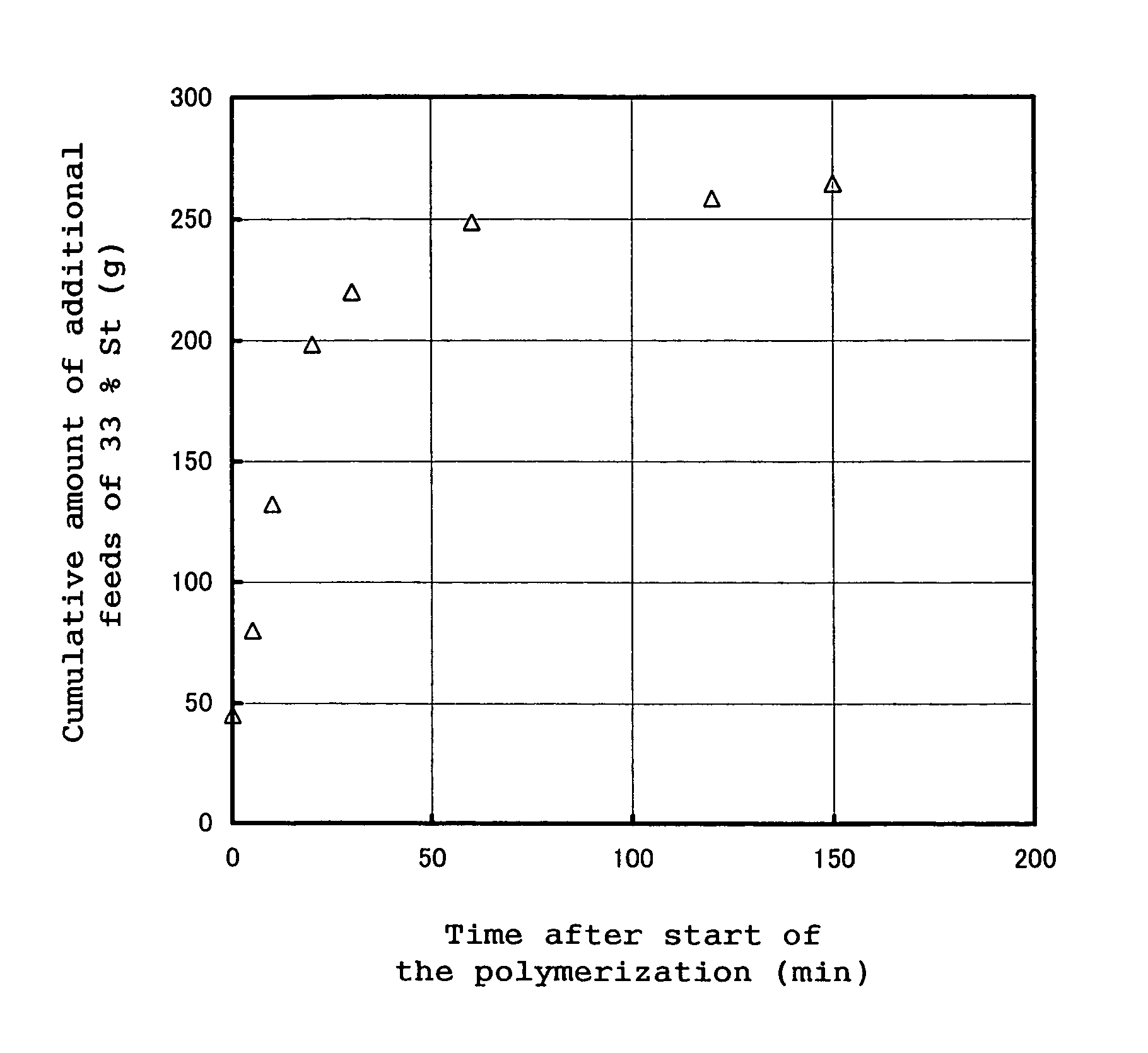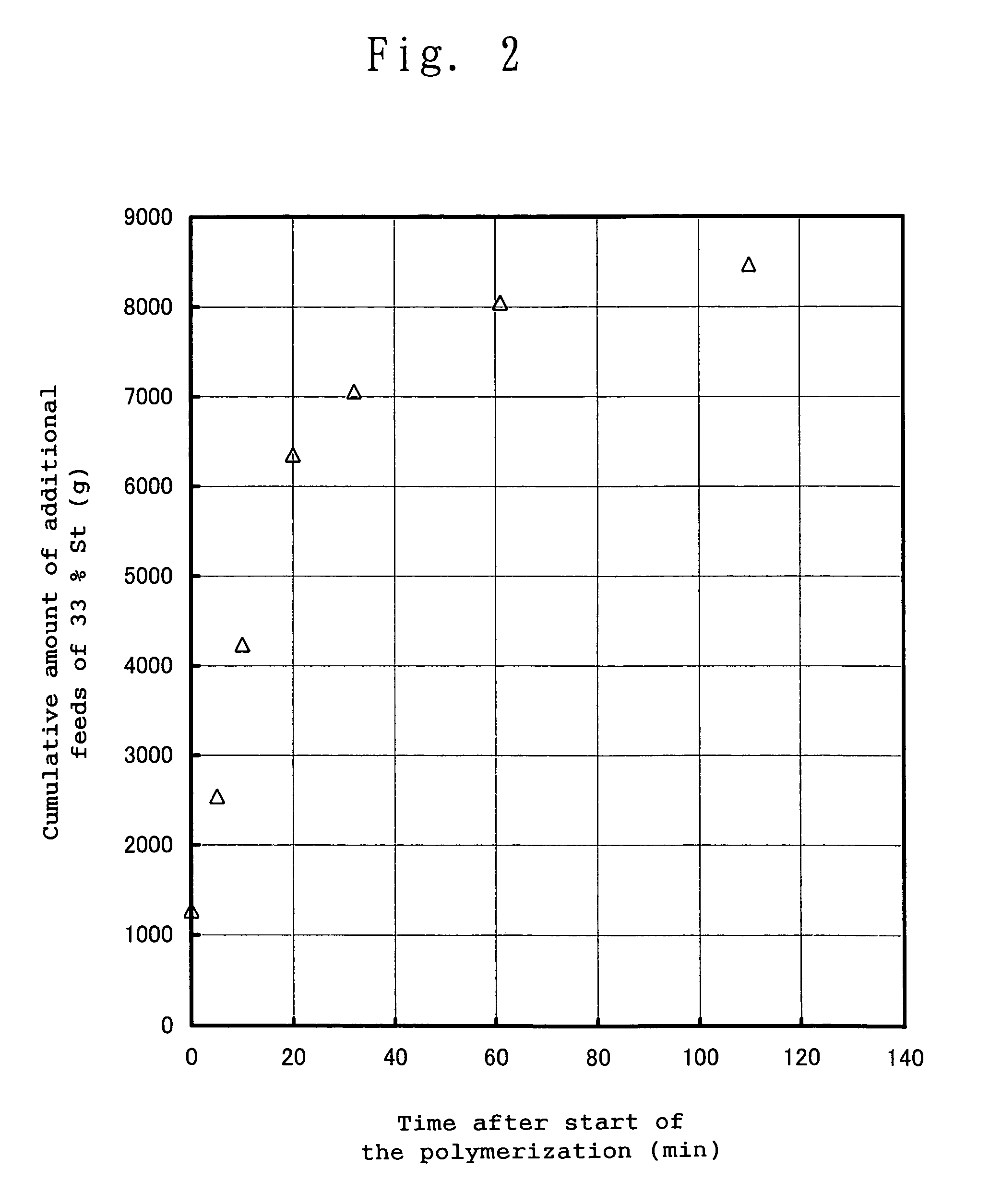Copolymer of conjugated cyclodiene
a conjugated diene and copolymer technology, applied in the field of cyclic conjugated diene copolymer, can solve the problems of poor transparency of general-purpose polyolefins in application fields, poor transparency of polypropylenes, poor transparency of general-purpose polyolefins having high crystallinity, etc., and achieve excellent properties with respect
- Summary
- Abstract
- Description
- Claims
- Application Information
AI Technical Summary
Benefits of technology
Problems solved by technology
Method used
Image
Examples
example 1
[0257]A 5 dm3 high pressure reactor was fully purged with dried nitrogen gas to remove oxygen contained in the reactor and dry the reactor. 2,219 g of cyclohexane as a reaction solvent and 346 g of 1,1-dimethoxycyclohexane (hereinafter frequently referred to as “CHDA”) were charged into the reactor, followed by stirring. Then, into the reactor were charged 600 g of 1,3-cyclohexadiene (hereinafter frequently referred to as “CHD”) and 31.54 g (40.44 cm3) of a 0.82 N cyclohexane solution of an equimolar mixture of 1,3-bis(1-lithio-1,3,3-trimethyl-butyl)benzene and triethylamine (hereinafter, this solution is frequently referred to as “DiLi”), and a polymerization reaction was started. The polymerization temperature at the time of the start of the polymerization reaction was 21° C. Immediately after the start of the polymerization reaction, 45 g of a cyclohexane solution of styrene wherein the solution had a styrene concentration of 33% by weight (hereinafter, this solution is frequentl...
example 2
[0268]A 60 dm3 high pressure reactor was fully purged with dried nitrogen gas to remove oxygen contained in the reactor and dry the reactor. 18,278 g of cyclohexane as a reaction solvent and 4,608 g of CHDA were charged into the reactor, followed by stirring. Then, into the reactor were charged 6,720 g of CHD and 1,309 g of a 33% St. Then, into the reactor was charged 76.93 g (95.68 cm3) of a 2.34 N n-hexane solution of n-butyllithium (hereinafter, this solution is frequently referred to as “NBL”), and a polymerization reaction was started. At the time of the start of the polymerization reaction, the internal temperature of the reactor was 21° C. After the start of the polymerization reaction, additional feeding of a 33% St was started, wherein the 33% St was intermittently fed in the manner as shown in Table 4. In FIG. 2, there is provided a graph showing the change with time in the cumulative amount of additional feeds of the 33% St, wherein the data of FIG. 2 has been corrected t...
example 3
[0302]A 5 dm3 high pressure reactor was fully purged with dried nitrogen gas to remove oxygen contained in the reactor and dry the reactor. 2,016 g of cyclohexane as a reaction solvent and 365 g of CHDA were charged into the reactor, followed by stirring. Next, into the reactor was charged 447 g of a cyclohexane solution of 1,3-butadiene wherein the solution had a 1,3-butadiene concentration of 33% by weight (hereinafter, 1,3-butadiene is frequently referred to as “BD”, and the cyclohexane solution of 1,3-butadiene is referred to as “33% BD”). The internal temperature of the reactor was adjusted to 40° C. Further, 31.00 g (39.80 cm3) of a 0.82 N DiLi was charged into the reactor, and a polymerization reaction was started. The internal temperature of the reactor immediately began to increase and reached 65° C. at a point in time which is 10 minutes after the start of the polymerization reaction. Then, the internal temperature of the reactor was adjusted to 50° C., and the polymerizat...
PUM
| Property | Measurement | Unit |
|---|---|---|
| Area | aaaaa | aaaaa |
| Area | aaaaa | aaaaa |
| Temperature | aaaaa | aaaaa |
Abstract
Description
Claims
Application Information
 Login to View More
Login to View More - R&D
- Intellectual Property
- Life Sciences
- Materials
- Tech Scout
- Unparalleled Data Quality
- Higher Quality Content
- 60% Fewer Hallucinations
Browse by: Latest US Patents, China's latest patents, Technical Efficacy Thesaurus, Application Domain, Technology Topic, Popular Technical Reports.
© 2025 PatSnap. All rights reserved.Legal|Privacy policy|Modern Slavery Act Transparency Statement|Sitemap|About US| Contact US: help@patsnap.com



